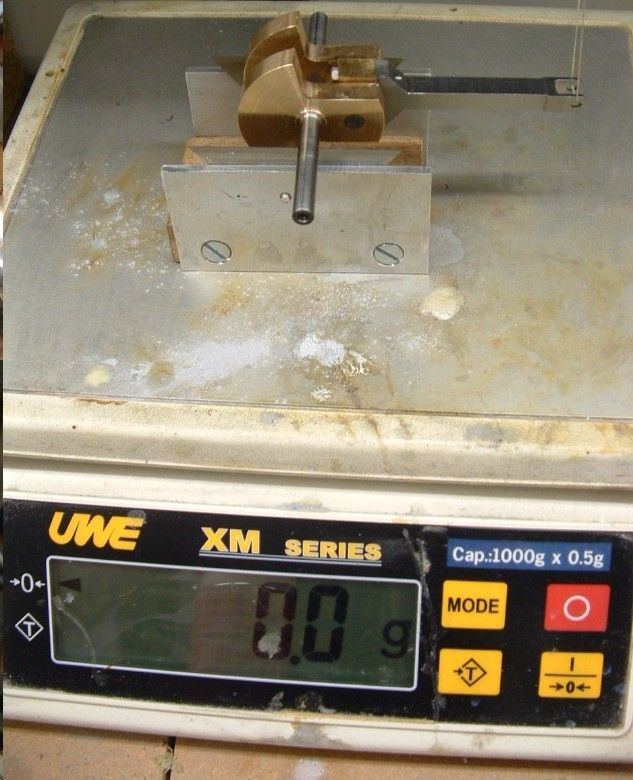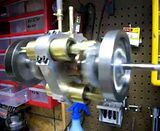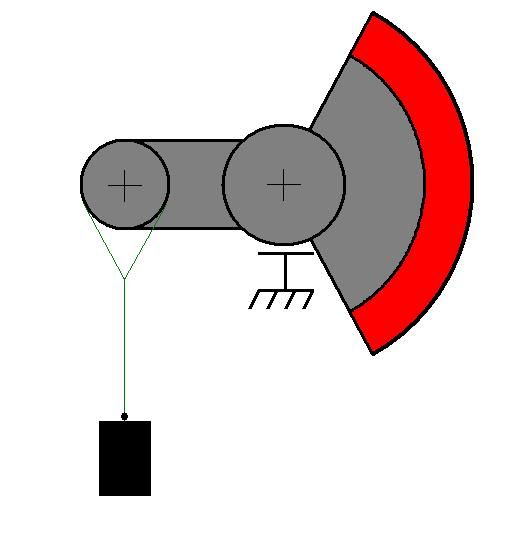BigOnSteam said:
Equation for minimizing engine vibration:
Formula No.3:
W1 = [K*(W2+W3)*r] / X
where:
W1 = weight of the counterweight (lbs.)
W2 = weight of the crank webs outside of the main shaft and crank pin (lbs.)
W3 = weight of reciprocating parts (piston, piston rod, crosshead, one half the weight of the connecting rod) (lbs.)
X = distance of center of mass of counterweight from center of the crankshaft (inches)
K = constant (use 0.67 for minimum vibration at right angles to the engine centerline, use 0.75 for minimum vibration at crank dead center)
r = distance from center of crankshaft to center of crank pin (inches)
Generally, vertical engines should tend toward using the 0.67 value for "k", and horizontal engines should tend towards using the 0.75 value for "k".
Ok, my tiny mind is slowly working this problem out (I hope), and I think this is what the others have already said (correct me guys if I mis-state something below, I am still trying to understand all this).
From the above equation, if we use a static balance situation, and just place the crankshaft on knife edges, with the counterweights on one side and the connecting rod, crosshead and pin, piston rod, piston, and ring hanging straight down on the other side, then we would have the counterweight mass (W1) times the distance of the center of mass of the counterweight from the center of the crankshaft (X) equaling the total mass of the crank pin plus the mass of the connecting rod, crosshead and pin, piston rod, piston and ring times the distance from the center of the crankshaft to the center of the crank pin (r), or:
Formula No.1:
W1*X = (W2+W3)*r
The assembly if statically balanced would stay in a horizontal position, like a balance used to measure weights, and in rotation, it should be perfectly balanced at TDC and BDC, but overbalanced at the crank quarters, and so would have a lot of horizontal forces (assuming a vertical engine), but not much in the way of vertical forces.
Formula No.3 (the original old formula) modifes the static balance situation by making the counterweight mass times distance "x" less than the mass of the parts on the other side times the distance "r", and the reduction in counterweight mass is half of the connecting rod weight, plus a reduction of between 25% and 33% due to the "k" constant multiplier.
So if you use the old formula, you are reducing the value for the mass on the side opposite the counterbalances by around 1/3.
If the crankshaft is on the quarter, then the formula for a static situation would be (?):
Formula No.2:
W1*X = (W2+half the connecting rod weight)*r
although the connecting rod would not be symmetrical in shape, so the above forumula would be approximate.
This formula should reduce or eliminate most of the side-to-side forces, but would result in higher vertical forces.
The counterweight required for Formula No. 2 would be much smaller than the counterweight required for Formula No.1, since Formula No.2 leaves out the crosshead, piston rod, piston, etc. masses.
So Formula No.1 (static balance) creates a counterweight that is too large, and Forumla No.2 (horizontal balance) creates a counterweight that is too small, so Formula No.3 (the original formula) strikes a balance between these two values.
Also, as others have mentioned, the crosshead, crosshead pin, piston piston rod, etc. are not revolving, so to multiply their weights by a distance "r" is treating them like the spinning ice skater who varies their speed when spinning by moving their arms closer or further away from their body, but these weights are not spinning, so there is apparently some fudging there in the formula.
The thing to remember is that balancing a single engine is at best a compromise between vertical and horizontal forces, but certainly using formula No.3 should restult in a significant reduction in out of balance forces, although not a perfect situation, perhaps an improved situation, since with no counterbalance at all, the engine will have no vertical or horizontal balance.
Pat J

















































![MeshMagic 3D Free 3D Modeling Software [Download]](https://m.media-amazon.com/images/I/B1U+p8ewjGS._SL500_.png)




![DreamPlan Home Design and Landscaping Software Free for Windows [PC Download]](https://m.media-amazon.com/images/I/51kvZH2dVLL._SL500_.jpg)




















